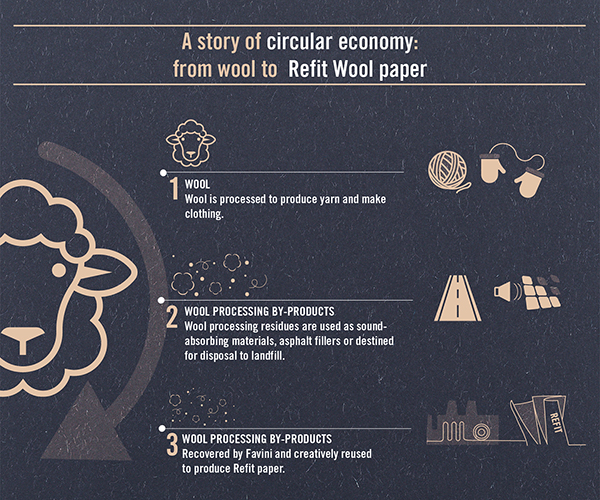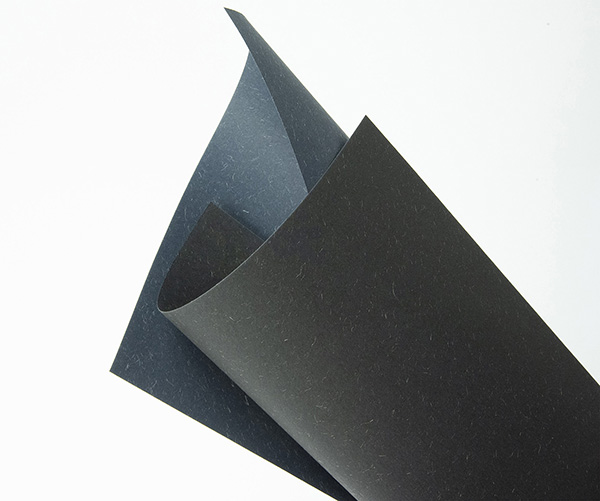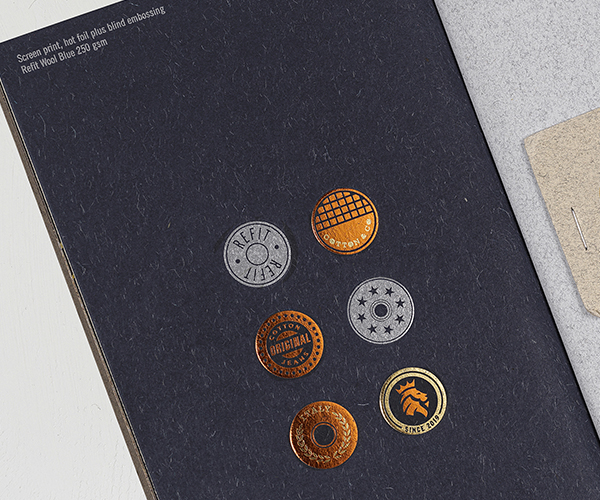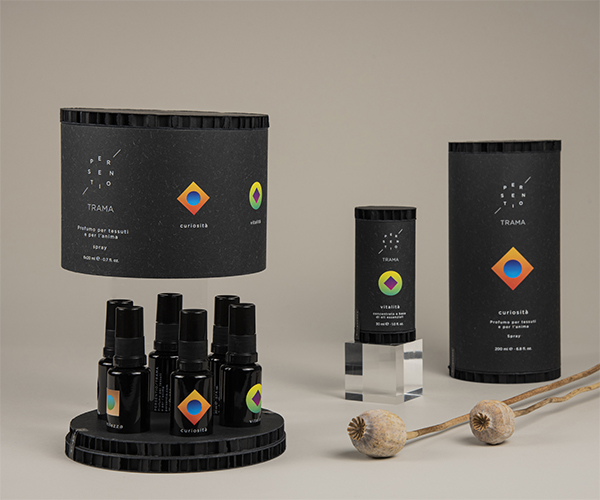Refit is the latest concept and product created by Favini as an eco-sustainable paper from creative reuse.
Favini’s new paper Refit is made with residues from wool and cotton textile production, which, thanks to the upcycling process, become a new alternative raw material for paper production. Two versions of the Refit paper were created from one single idea of circular economy: Wool and Cotton.
Refit continues the practice of creative reuse of alternative raw materials for the production of ecological papers, first undertaken by Favini back in the 90s with Shiro Alga Carta, followed by Crush in 2012 and Remake in 2015.
From an industrial symbiosis between the textile and paper sector, the ecological papers Refit Wool and Refit Cotton are created: the by-products of wool and cotton processes now become a raw material for the production of high quality ecological paper, according to the logic of creative reuse of the circular economy.
In this article, we will explain the life cycle of wool up to its transformation into the ecological paper Refit Wool. Stay updated with the “Circular Economy” section of our blog to read the next case history about Refit Cotton.
Creative Reuse and Industrial Symbiosis: Definition and Case History
Upcycling literally means to use waste materials, that were to be thrown away and create new objects with a greater value than the original material. Upcycling is not one and the same as recycling, as it is something that goes further. Discover the definition and case studies in the article Upcycling is word of the year 2019.
Industrial symbiosis, the process in which traditionally separate industries integrate their processes to promote competitive advantages through an exchange of materials, energy and by-products – as in the case of Favini and its ecological papers – allowing the creation of a new product: Refit, the ecological paper by Favini, created thanks to the interaction and the exchange of by-products between paper and textile sectors.
Refit Wool: A Circular Economy Case History, from Wool to Eco-Sustainable Paper

Wool is a textile fibre obtained from the coat of different animals, sheep, goat, alpaca, rabbit, camel. Usually the term “wool” refers only to the fleece obtained by shearing sheep.
Human use of this material dates back to 5000 B.C. but it was the Babylonians who discovered the art of working with wool: In Babylon, which means “land of wool”, the wool was twisted with the fingers and stretched to obtain a yarn that could then be woven to form a fabric.
Since the time of the Babylonians, there has been an evolution and improvement of techniques, but the phases of wool processing still remain unchanged today. [1]
It begins with the shearing when the fleece is shorn from the animal’s body, then there is the washing and carding of the textile fibres in order to eliminate any knots, this will untangle and align the fibres that are subsequently spun. The process ends with the weaving of the yarn on the loom. [2]
During these processing stages, by-products are generated: these are the fibres that, due to their short length or other inadequate characteristics, are discarded. Often found as fibres that break loose from the structure of the yarn or machinery and settle on the side of the machines or are captured by the suction and filtering systems. [3]
Generally, these wool processing residues are directed for use as sound-absorbing material or asphalt fillers giving a durable product, but which is not recyclable nor biodegradable and it is largely destined for disposal to landfill.
Favini has found a way to creatively reuse these wool residues in paper production. Refit Wool is produced, becoming the 100% recyclable and biodegradable ecological paper, printable and convertible as an excellent high quality paper, for screen printing processes, embossing and hot foil.

The content of Favini’s paper Refit Wool includes 15% of fibre derived from wool by-products, 40% post-consumer recycled cellulose and 45% of virgin cellulose fibres. For the production of Refit Wool paper, the textile by-products used are of Italian origin and come from the carding and spinning of wool and do not require the use of additional chemicals. The transformation process of wool by-products into an alternative raw material for the production of paper involves a simple mechanical processing of fraying and cutting of the fibres.
Refit Wool, with its characteristic surface lint that contrasts with the dark hue of the paper, is a unique material to the touch, the wool fibres that are clearly noticeable when feeling the paper give a distinctive tactile effect.
We advise not to print Refit Wool by lithography, but instead we suggest complementing this material with hot foil, screen print and embossing, superb results will be obtained.
The visual book Refit “Cotton Wool” is an excellent example of this: The editorial project displays images printed on Refit paper using classic print techniques and finishing, as well as unconventional experiments to inspire you to try extraordinary techniques.

From Textile Residues to Paper to Create Ecological Packaging and Design Projects with Refit

Refit is the ideal support for projects for the world of fashion. For consistency of theme, we think that an ecological paper produced with 15% wool processing waste is perfect for clothing packaging and accessories, labels and shopping bags.
For more inspiration and application examples created with Refit, click and look at the dedicated Pinterest board.
Have you used our ecological paper Refit and would you like to share the result on our social channels? Send your piece of circular economy history to [email protected].
Click to find out more about Refit and request the sample.
[1] Lifegate.it
[2] mumatvaldagno.it
[3] buzzilab.it


